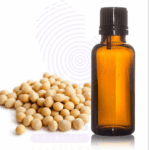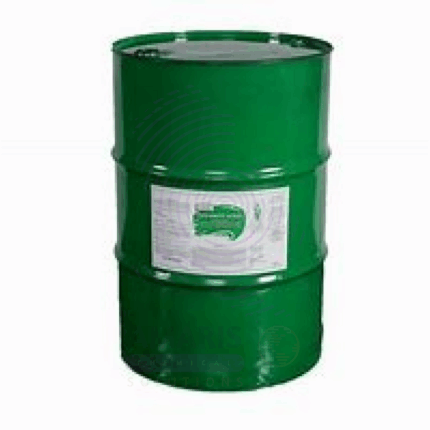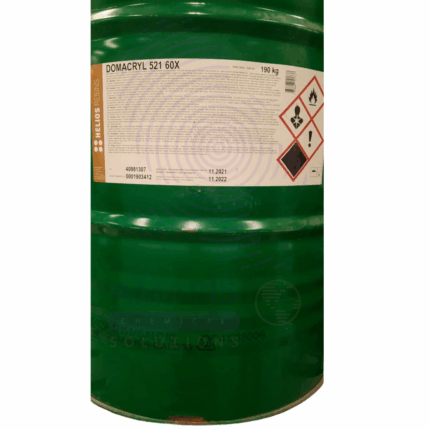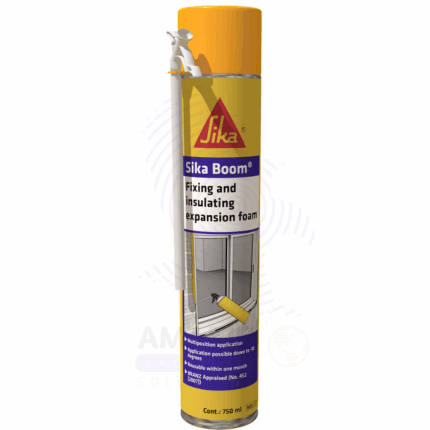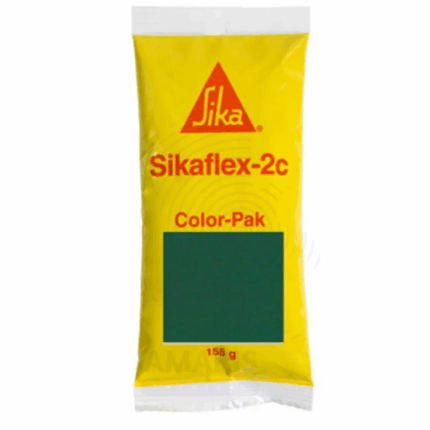Acrytan SN
Whatsapp Order
Acrytan SN is a water-based acrylic copolymer emulsion used primarily as a binder or film-former in coatings, paints, adhesives, and textile applications. It provides excellent adhesion, flexibility, and durability, along with good resistance to water and weathering.
Categories: Binders/Resins, Finishing Agents, Sealants and Adhesives
Tags: Acrylic Resin, Acrytan SN, Paints and coatings
Description
Table of Contents
Toggle
Acrytan SN
Primary Uses
- Leather Tanning & Retanning
- Used as a synthetic tanning agent (syntan) to improve leather softness and uniformity.
- Enhances fiber dispersion, making leather more flexible and less prone to cracking.
- Often combined with vegetable or chrome tanning for balanced properties.
- Lightfast & White Leather Production
- Ideal for white and pastel-colored leathers (e.g., fashion accessories, upholstery) due to its resistance to yellowing.
- Used in automotive leather, footwear, and luxury goods.
- Fatliquoring & Softening
- Helps retain natural oils in leather, improving suppleness.
Secondary Uses
- Leather Finishing
- Used in top coatings to enhance smoothness and durability.
- Textile & Non-Woven Fabric Treatment
- Occasionally applied to synthetic leather (PU/PVC) for better hand feel.
- Paper & Packaging Industry
- Used in leather-like paper coatings for premium packaging.
KEY PRODUCT ATTRIBUTE
1. Basic Identification Attributes
- Chemical Name: Acrylic copolymer emulsion (exact composition varies by manufacturer)
- Common/Trade Names:
- Acrytan SN
- Acrylic textile binder SN
- Polyacrylate emulsion SN
- CAS Number: Proprietary blend (typically based on [9003-01-4] for acrylic polymers)
- HS Code: 3906.90.90 (other acrylic polymers)
- Molecular Formula: (C₃H₄O₂)ₙ (acrylic acid polymer base)
- Synonyms:
- Acrylic resin emulsion
- Textile finishing agent SN
- Polyacrylic binder
2. Physical & Chemical Properties
- Physical State: Milky white liquid emulsion
- Color & Odor: White to off-white; mild characteristic odor
- Melting Point: >150°C (film formation)
- Boiling Point: ~100°C (water evaporation)
- Density: 1.05-1.10 g/cm³ at 20°C
- Solubility:
- Water: Dispersible
- Organic solvents: Forms film when dried
- pH Level: 6.5-8.5 (typically neutral)
- Viscosity: 500-3000 cP (Brookfield, 25°C)
- Solid Content: 40-50% by weight
- Film Formation Temperature: 20-30°C
3. Safety & Hazard Attributes
- Hazard Class (GHS):
- Not classified as hazardous (most variants)
- May contain trace monomers (check SDS)
- NFPA Ratings:
- Health: 1
- Flammability: 1
- Reactivity: 0
- Exposure Limits:
- No specific OEL established
- General dust limit for particulates: 10 mg/m³
- Reactivity:
- Stable under normal conditions
- Avoid strong oxidizers
4. Storage & Handling Attributes
- Storage Conditions:
- Store at 5-40°C
- Protect from freezing
- Keep containers tightly closed
- Incompatible Materials:
- Strong acids/bases
- Polyelectrolytes
- Container Type:
- HDPE drums or IBC tanks
- Stainless steel equipment
- Shelf Life: 6-12 months
- Special Handling:
- Standard PPE (gloves, goggles)
- Avoid skin contact (may cause sensitization)
5. Regulatory & Compliance Attributes
- Regulatory Status:
- REACH registered (for components)
- OEKO-TEX® compliant (most grades)
- FDA compliant variants available
- Hazard Symbols (GHS): None typically
- Transportation Restrictions:
- Not classified as dangerous goods
- UN number: None required
- Waste Disposal Method:
- Coagulate and dispose as solid waste
- Follow local regulations
6. Environmental & Health Impact
- Ecotoxicity:
- LC50 (fish): >100 mg/L
- EC50 (daphnia): >100 mg/L
- Persistence:
- Not readily biodegradable
- Carcinogenicity:
- Not classified (IARC/NTP)
- Biodegradability:
- <10% in 28 days (OECD 301B)
SAFETY HANDLING
Safety Precautions
Personal Protective Equipment (PPE)
- Gloves: Nitrile or neoprene (chemical-resistant)
- Eye Protection: Safety goggles (for liquid/splash risk) or face shield (if handling powder)
- Respiratory Protection:
- N95 mask (for dust/powder)
- Organic vapor respirator (if handling solvent-based formulations)
- Clothing: Lab coat or chemical-resistant apron
Handling & Storage
- Work in a well-ventilated area (use a fume hood if handling solvents).
- Avoid skin/eye contact—acrylic compounds can be irritants.
- Store in a cool, dry place away from direct sunlight and heat sources.
- Keep away from strong oxidizers (e.g., peroxides, chlorates).
- Ground containers to prevent static buildup (if flammable solvents are present).
Hygiene Measures
- No eating, drinking, or smoking in handling areas.
- Wash hands thoroughly after use.
- Emergency eyewash/shower must be accessible.
First Aid Measures
Inhalation (Dust/Vapors)
- Move to fresh air immediately.
- If breathing is difficult, provide oxygen and seek medical attention.
Skin Contact
- Remove contaminated clothing.
- Wash with soap and water for ≥15 minutes.
- If irritation persists, seek medical help.
Eye Contact
- Rinse eyes with water for ≥15 minutes (hold eyelids open).
- Seek immediate medical attention (risk of corneal irritation).
Ingestion
- Do NOT induce vomiting.
- Rinse mouth with water.
- Seek medical attention if swallowed (risk of gastrointestinal irritation).
Firefighting Measures
Fire Hazards
- Combustible (if solvent-based) but not highly flammable in solid/powder form.
- May emit toxic fumes (CO, CO₂, nitrogen oxides) when heated.
Extinguishing Media
✔ Dry chemical powder
✔ CO₂
✔ Foam (for liquid forms)
✔ Water spray (to cool containers, but avoid water jets if solvents are present).
Firefighting Precautions
- Wear SCBA (self-contained breathing apparatus).
- Cool nearby containers with water spray.
- Contain runoff to prevent environmental contamination.
Spill & Disposal
Small Spills
- Wear PPE.
- Absorb with inert material (sand, vermiculite).
- Place in a sealed hazardous waste container.
Large Spills
- Evacuate area.
- Contain spill with barriers (clay, sandbags).
- Prevent entry into drains or waterways.
Disposal
- Treat as chemical waste (follow local regulations).
- Do not pour down drains.
Related products
Clear Emulsion
Clear Emulsion is a transparent or translucent mixture of two immiscible liquids—typically oil and water—stabilized by emulsifying agents to form a stable, homogenous system. This product is widely used in cosmetics and personal care, pharmaceuticals, and specialty industrial applications due to its lightweight texture, ease of absorption, and aesthetic appeal. Clear emulsions offer a visually appealing, non-greasy feel with the advantages of both oil and water phases, delivering moisturizing, protective, and active ingredient-carrying benefits. Their clarity distinguishes them from traditional creamy emulsions, making them popular in modern skincare and cosmetic formulations.
Domacryl
Domacryl is a high-performance acrylic polymer latex designed for use as a binder in water-based coatings, adhesives, sealants, and construction materials. It is a styrene-acrylic copolymer emulsion offering excellent film formation, adhesion, durability, and chemical resistance. Domacryl provides superior mechanical strength and flexibility in formulated products, making it ideal for applications requiring long-lasting protection and enhanced aesthetic qualities. The polymer is supplied as a stable aqueous dispersion with approximately 50% solids content, packed in bulk (190 kg drums) for industrial use.
Eagle Homopolymer 510/50
Eagle Homopolymer 510/50 50% is a high-purity homopolymer solution, typically referring to polyvinyl alcohol (PVA) or a similar water-soluble polymer supplied at 50% concentration. This product offers excellent film-forming, adhesive, thickening, and stabilizing properties, making it versatile in applications such as adhesives, textile sizing, paper coating, and packaging. The homopolymer’s controlled molecular weight and solution viscosity provide consistent performance and ease of handling. The 50% aqueous solution form facilitates easy mixing and incorporation into various formulations.
Hylac U94
Hylac is a high-performance, water-based acrylic polymer emulsion widely used as a binding agent and adhesive in coatings, paints, sealants, and construction materials. It offers excellent film formation, adhesion, flexibility, and weather resistance. Hylac U94 is formulated for superior compatibility with a wide range of fillers, pigments, and additives, making it ideal for both industrial and decorative applications. It delivers enhanced durability, water resistance, and color retention, suitable for indoor and outdoor uses.
Hytan RS
Hytan RS is a premium reactive silicone-based release agent engineered for efficient mold release, surface protection, and lubrication across diverse industrial sectors. Its unique formulation ensures the formation of a durable, non-stick, thin silicone film that facilitates easy demolding and improves surface finish quality on metals, plastics, rubber, and composite substrates. Its robust performance enhances production efficiency by reducing cycle times and minimizing defects.
Sika Boom Expanding Foam
Sika Boom Expanding Foam is a one-component, polyurethane-based, fast-curing foam designed for sealing, filling, insulating, and bonding applications in construction and renovation. It expands rapidly upon dispensing to fill cavities, gaps, and voids, providing excellent thermal and acoustic insulation. The foam adheres well to most common building materials such as wood, concrete, metal, and plastics. It is moisture-curing and offers good resistance to aging, shrinking, and water.
Sika Flex 2c Color Pack
Sika Flex 2c Color Pack is a high-quality, ready-to-use colorant additive designed specifically to tint two-component polyurethane and hybrid sealants and adhesives. It provides consistent, vibrant, and durable colors that enhance the aesthetic appeal and blend seamlessly with construction materials. This color pack is compatible with Sika Flex 2c sealants, enabling customized color matching for joints and sealing applications in construction, automotive, and industrial projects.
Textile Stiffner
Textile Stiffner is a finishing agent formulated to impart stiffness, body, and shape retention to fabrics. It is typically composed of natural or synthetic polymers such as starch derivatives, polyvinyl acetate, acrylic resins, or modified cellulose. Applied during the finishing process, textile stiffeners enhance the handle, drape, and durability of textiles, making them suitable for a wide range of applications from fashion to industrial fabrics.


 Preservatives(food)
Preservatives(food) Flavor Enhancers
Flavor Enhancers Acidulants
Acidulants Sweeteners
Sweeteners Antioxidants
Antioxidants Colorants(food)
Colorants(food) Nutraceutical Ingredients (food)
Nutraceutical Ingredients (food) Nutrient Supplements
Nutrient Supplements Emulsifiers
Emulsifiers
 Collectors
Collectors Dust Suppressants
Dust Suppressants Explosives and Blasting Agents
Explosives and Blasting Agents Flocculants and Coagulants
Flocculants and Coagulants Frothers
Frothers Leaching Agents
Leaching Agents pH Modifiers
pH Modifiers Precious Metal Extraction Agents
Precious Metal Extraction Agents
 Antioxidants(plastic)
Antioxidants(plastic) Colorants (Pigments, Dyes)
Colorants (Pigments, Dyes) Fillers and Reinforcements
Fillers and Reinforcements Flame Retardants
Flame Retardants Monomers
Monomers Plasticizers
Plasticizers Polymerization Initiators
Polymerization Initiators Stabilizers (UV, Heat)
Stabilizers (UV, Heat)
 Antifoaming Agents
Antifoaming Agents Chelating Agents
Chelating Agents Coagulants and Flocculants
Coagulants and Flocculants Corrosion Inhibitors
Corrosion Inhibitors Disinfectants and Biocides
Disinfectants and Biocides Oxidizing Agents
Oxidizing Agents pH Adjusters
pH Adjusters Scale Inhibitors( water)
Scale Inhibitors( water)
 Antioxidants(cosmetic)
Antioxidants(cosmetic) Emollients
Emollients Fragrances and Essential Oils
Fragrances and Essential Oils Humectants
Humectants Preservatives
Preservatives Surfactants(cosmetic)
Surfactants(cosmetic) Thickeners
Thickeners UV Filters
UV Filters
 Fertilizers
Fertilizers Soil Conditioners
Soil Conditioners Plant Growth Regulators
Plant Growth Regulators Animal Feed Additives
Animal Feed Additives Biostimulants
Biostimulants Pesticides (Herbicides, Insecticides, Fungicides)
Pesticides (Herbicides, Insecticides, Fungicides)
 Active Pharmaceutical Ingredients (APIs)
Active Pharmaceutical Ingredients (APIs) Excipients
Excipients Solvents(pharmaceutical)
Solvents(pharmaceutical) Antibiotics
Antibiotics Antiseptics and Disinfectants
Antiseptics and Disinfectants Vaccine Adjuvants
Vaccine Adjuvants Nutraceutical Ingredients (pharmaceutical)
Nutraceutical Ingredients (pharmaceutical) Analgesics & Antipyretics
Analgesics & Antipyretics
 Analytical Reagents
Analytical Reagents Solvents(lab)
Solvents(lab) Chromatography Chemicals
Chromatography Chemicals Spectroscopy Reagents
Spectroscopy Reagents microbiology-and-cell-culture-reagents
microbiology-and-cell-culture-reagents Molecular Biology Reagents
Molecular Biology Reagents Biochemical Reagents
Biochemical Reagents Inorganic and Organic Standards
Inorganic and Organic Standards Laboratory Safety Chemicals
Laboratory Safety Chemicals Specialty Laboratory Chemicals(Special Laboratory Equipment)
Specialty Laboratory Chemicals(Special Laboratory Equipment)
 Demulsifiers
Demulsifiers Hydraulic Fracturing Fluids
Hydraulic Fracturing Fluids Scale Inhibitors(oil)
Scale Inhibitors(oil) Surfactants(oil)
Surfactants(oil) Drilling Fluids
Drilling Fluids
 Dyes and Pigments
Dyes and Pigments Bleaching Agents
Bleaching Agents Softening Agents
Softening Agents Finishing Agents
Finishing Agents Antistatic Agents
Antistatic Agents
 Admixtures
Admixtures Waterproofing Agents
Waterproofing Agents Sealants and Adhesives
Sealants and Adhesives Curing Compounds
Curing Compounds Concrete Repair Chemicals
Concrete Repair Chemicals Anti-Corrosion Coatings
Anti-Corrosion Coatings
 Surfactants(cleaning)
Surfactants(cleaning) Builders
Builders Enzymes
Enzymes Solvents (Cleaning)
Solvents (Cleaning) Fragrances
Fragrances
 Electronic Chemicals
Electronic Chemicals Catalysts
Catalysts Lubricants
Lubricants Photographic Chemicals
Photographic Chemicals Refrigerants
Refrigerants Automotive chemicals
Automotive chemicals Pyrotechnic Chemicals
Pyrotechnic Chemicals
 Biodegradable Surfactants
Biodegradable Surfactants Bio-based Solvents
Bio-based Solvents Renewable Polymers
Renewable Polymers Carbon Capture Chemicals
Carbon Capture Chemicals Wastewater Treatment Chemicals
Wastewater Treatment Chemicals
 Pigments
Pigments Solvents(paint)
Solvents(paint) Specialty Coatings
Specialty Coatings Binders/Resins
Binders/Resins Additives
Additives Driers
Driers Anti-Corrosion Agents
Anti-Corrosion Agents Functional Coatings
Functional Coatings Application-Specific Coatings
Application-Specific Coatings
 Fresh Herbs
Fresh Herbs Ground Spices
Ground Spices Whole Spices
Whole Spices Spice Blends
Spice Blends Dried Herbs
Dried Herbs
 Leavening Agents
Leavening Agents Dough Conditioners
Dough Conditioners Flour Treatments
Flour Treatments Fat Replacers
Fat Replacers Decoratives
Decoratives Preservatives(baking)
Preservatives(baking)
 Plasticizers & Softeners
Plasticizers & Softeners Reinforcing Agents
Reinforcing Agents Adhesion Promoters
Adhesion Promoters Vulcanizing Agents
Vulcanizing Agents Antidegradants
Antidegradants Blowing Agents
Blowing Agents Fillers & Extenders
Fillers & Extenders Accelerators & Retarders
Accelerators & Retarders
